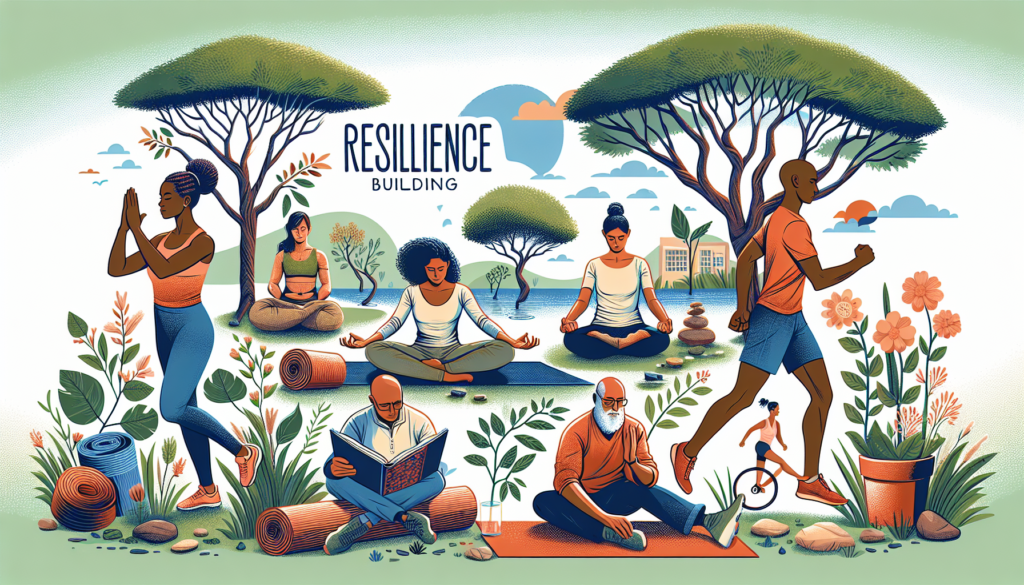Building Resilience Through Activities
Resilience, the ability to bounce back from adversity, is a crucial skill that can help individuals navigate life’s challenges with grace and strength. While some people seem naturally resilient, it is a skill that can be cultivated and nurtured through various activities and practices. In this comprehensive guide, we will delve into the world of resilience-building activities, exploring their benefits, techniques, and effectiveness.
The Science of Resilience
Before we delve into specific activities, it’s essential to understand the science behind resilience. Resilience is not a fixed trait but rather a dynamic process that can be developed over time. Research has shown that resilience is influenced by various factors, including genetics, environment, and personal experiences. By engaging in specific activities, individuals can strengthen their resilience and adaptability in the face of adversity.
Physical Activities
Physical activities such as exercise and sports can have a profound impact on resilience. Exercise is known to reduce stress, improve mood, and enhance overall well-being. Regular physical activity can boost self-confidence and provide a sense of accomplishment, which are vital components of resilience. Whether it’s going for a run, practicing yoga, or playing a team sport, engaging in physical activities can help individuals build resilience and cope with challenges more effectively.

Mindfulness and Meditation
Mindfulness and meditation practices are powerful tools for building resilience. These practices involve focusing on the present moment, cultivating awareness, and developing a sense of inner calm. By practicing mindfulness and meditation, individuals can learn to manage stress, regulate emotions, and enhance their ability to cope with adversity. Research has shown that mindfulness can help reduce anxiety, depression, and other mental health issues, making it a valuable resource for building resilience.
Social Support and Connection
Building strong social connections and seeking support from others is essential for resilience. Having a supportive network of friends, family, and peers can provide emotional support, practical assistance, and a sense of belonging. By nurturing relationships and fostering connections, individuals can create a safety net that helps them navigate challenges and setbacks. Engaging in social activities, volunteering, and participating in community events are all ways to strengthen social support and build resilience.
Gratitude Practices
Cultivating a sense of gratitude can also boost resilience. Gratitude practices involve focusing on the positive aspects of life and expressing appreciation for the good things that happen. By developing a gratitude mindset, individuals can shift their perspective, enhance their resilience, and build a sense of optimism. Keeping a gratitude journal, writing thank-you notes, and practicing random acts of kindness are all effective ways to incorporate gratitude into daily life and strengthen resilience.

Goal Setting and Planning
Setting goals and creating a plan of action is another effective resilience-building activity. By defining clear objectives, breaking them down into manageable steps, and creating a timeline for achievement, individuals can enhance their motivation, focus, and sense of control. Goal setting provides a sense of purpose and direction, which can help individuals stay resilient in the face of challenges. Whether it’s setting career goals, personal goals, or health goals, having a roadmap to follow can boost resilience and foster a sense of accomplishment.
Self-Care and Stress Management
Practicing self-care and stress management techniques is essential for building resilience. Self-care involves taking care of one’s physical, emotional, and mental well-being, prioritizing rest, relaxation, and healthy habits. By managing stress through techniques such as deep breathing, mindfulness, and time management, individuals can enhance their resilience and prevent burnout. Taking breaks, engaging in hobbies, and practicing self-compassion are all important aspects of self-care that can help individuals build resilience in the long run.
Challenging Negative Thoughts
Challenging negative thoughts and reframing beliefs is a powerful resilience-building activity. Negative thinking patterns can undermine resilience and lead to feelings of helplessness and despair. By identifying negative thoughts, questioning their validity, and replacing them with more positive and empowering beliefs, individuals can enhance their resilience and emotional well-being. Cognitive-behavioral therapy and positive affirmations are effective tools for challenging negative thoughts and building resilience.
Expert Opinions
According to resilience expert Dr. Karen Reivich, “Resilience is not about toughing it out or pretending everything is okay. It’s about facing adversity head-on, learning from setbacks, and bouncing back stronger.” Dr. Reivich emphasizes the importance of building resilience through activities that promote self-awareness, emotional regulation, and problem-solving skills. She suggests that individuals can cultivate resilience by practicing gratitude, seeking social support, and developing a growth mindset.
Conclusion
To wrap things up, building resilience through activities is a multifaceted process that involves physical, emotional, and cognitive strategies. By engaging in activities such as exercise, mindfulness, social support, gratitude practices, goal setting, self-care, and challenging negative thoughts, individuals can enhance their resilience and navigate life’s challenges with resilience and strength. Remember, resilience is not a fixed trait but a skill that can be developed and nurtured over time. By incorporating resilience-building activities into daily life, individuals can build a strong foundation for facing adversity and thriving in the face of challenges.


